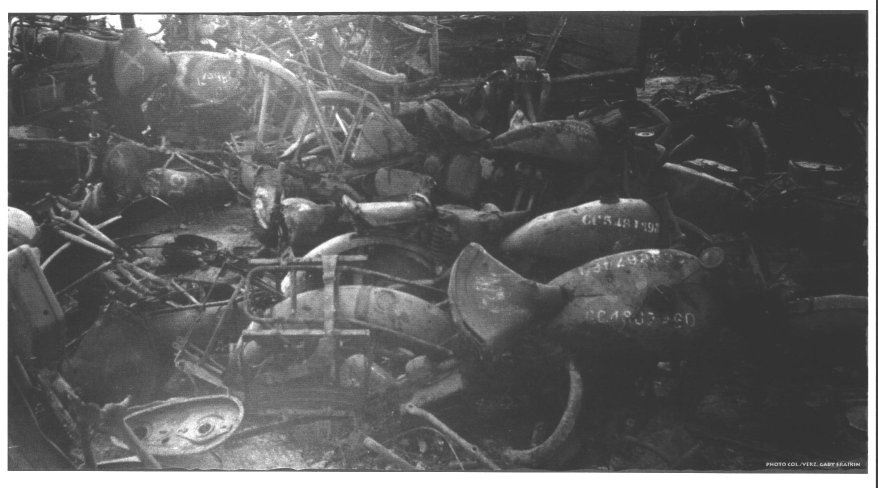|
Donor bike used for restoration of my bike, also from
the Greek shipment in the 70'ties. (Contract plate S5161)
Identification plate on the rear mudguard (below tail
light) indicates contract number S5161. Frame number showed to be made on
contract C12426, delivered from august 1942.
Anybody who has restored a military
Norton (or any other model military motorcycle for that matter) is usually
right about it.
What I do feel strong about however, is that when a motorcycle is restored to
immaculate condition, it should be according to the most likely factory
specification. A "rebuilt" looking better than new is just not
original. In the same way that a military bike without mud is out of context/unnatural.
Do not take me wrong here. The work put into such a bike is absolutely
marvellous. I do admire people who have been laboring onto the smallest part
and have done a wonderful technical job. My personal opinion is that a
military bike was a bike with a practical purpose, not made to be a showroom
piece.

With respect to paint, a lot is possible.
One engine I acquired a number of years ago was covered
by two shades of brown under two shades of green. This indicates at
least four military paint jobs after delivery as the engines were without
paint on delivery. For further info on
colours, see colours page. In a number of
cases, a red/brown type of iron oxide primer has been found on original
parts. On prewar parts however, there is no red oxide primer found.
One place to look for the originally applied factory colour is the front lower frame
to engine mounting bracket. The inside thereoff seems to be a place often
missed during the early restorations which most likely were done using
sandpaper and muscle power instead of the "all removing" bead blast
techniques used nowadays.

Discarded, abused and forgotten then. Would be a restorers candy box now!
After the war, many military Norton's were painted
black with a silver petrol tank (Many others were left to rot, as shown above). If you feel more comfortable the civilian way, you
are pretty original with such a colour scheme for a post war period civilianized
16H.
For reasons I can only guess, many "civilian" bikes are
marketed as prewar. With the details given on the civil versus military bikes
you can easily ascertain what bike you are looking at.
It actually took me 4
years to find a genuine prewar example. Original civil
16H (and Big 4) are quite rare. Side valves being the "poor man's" Norton, the type has suffered
from a continues lack of interest.
If you are curious about your bikes
history and the unlikelyness that you will ever find it, read the Individual
motorcycle history page.
|

